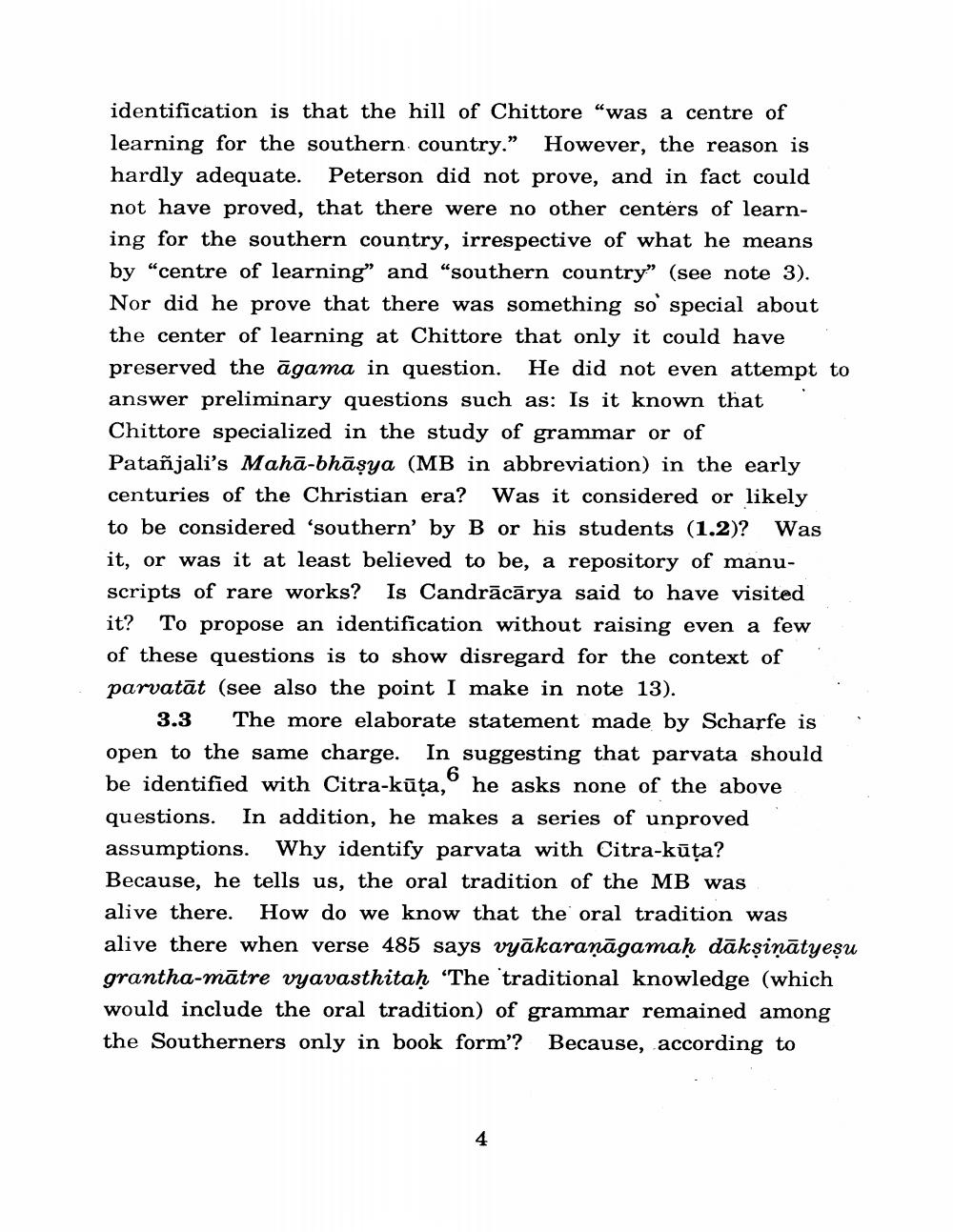Book Title: Paninian Studies Author(s): Ashok Aklujkar Publisher: Ashok Aklujkar View full book textPage 4
________________ identification is that the hill of Chittore "was a centre of learning for the southern country." However, the reason is hardly adequate. Peterson did not prove, and in fact could not have proved, that there were no other centers of learning for the southern country, irrespective of what he means by "centre of learning" and "southern country" (see note 3). Nor did he prove that there was something so special about the center of learning at Chittore that only it could have preserved the agama in question. He did not even attempt to answer preliminary questions such as: Is it known that Chittore specialized in the study of grammar or of Patanjali's Maha-bhāṣya (MB in abbreviation) in the early centuries of the Christian era? Was it considered or likely to be considered 'southern' by B or his students (1.2)? Was it, or was it at least believed to be, a repository of manuscripts of rare works? Is Candrācārya said to have visited it? To propose an identification without raising even a few of these questions is to show disregard for the context of parvatāt (see also the point I make in note 13). 3.3 The more elaborate statement made by Scharfe is open to the same charge. In suggesting that parvata should 6 be identified with Citra-kūta, he asks none of the above questions. In addition, he makes a series of unproved assumptions. Why identify parvata with Citra-kūṭa? Because, he tells us, the oral tradition of the MB was alive there. How do we know that the oral tradition was alive there when verse 485 says vyakaraṇāgamaḥ dākṣinātyeṣu grantha-mātre vyavasthitaḥ "The traditional knowledge (which would include the oral tradition) of grammar remained among the Southerners only in book form'? Because, according to 4Page Navigation
1 2 3 4 5 6 7 8 9 10 11 12 13 14 15 16 17 18 19 20 21 22 23 24 25 26 27 28 29 30 31 32 33 34 35 36 37 38 39 40 41 42 ... 47
